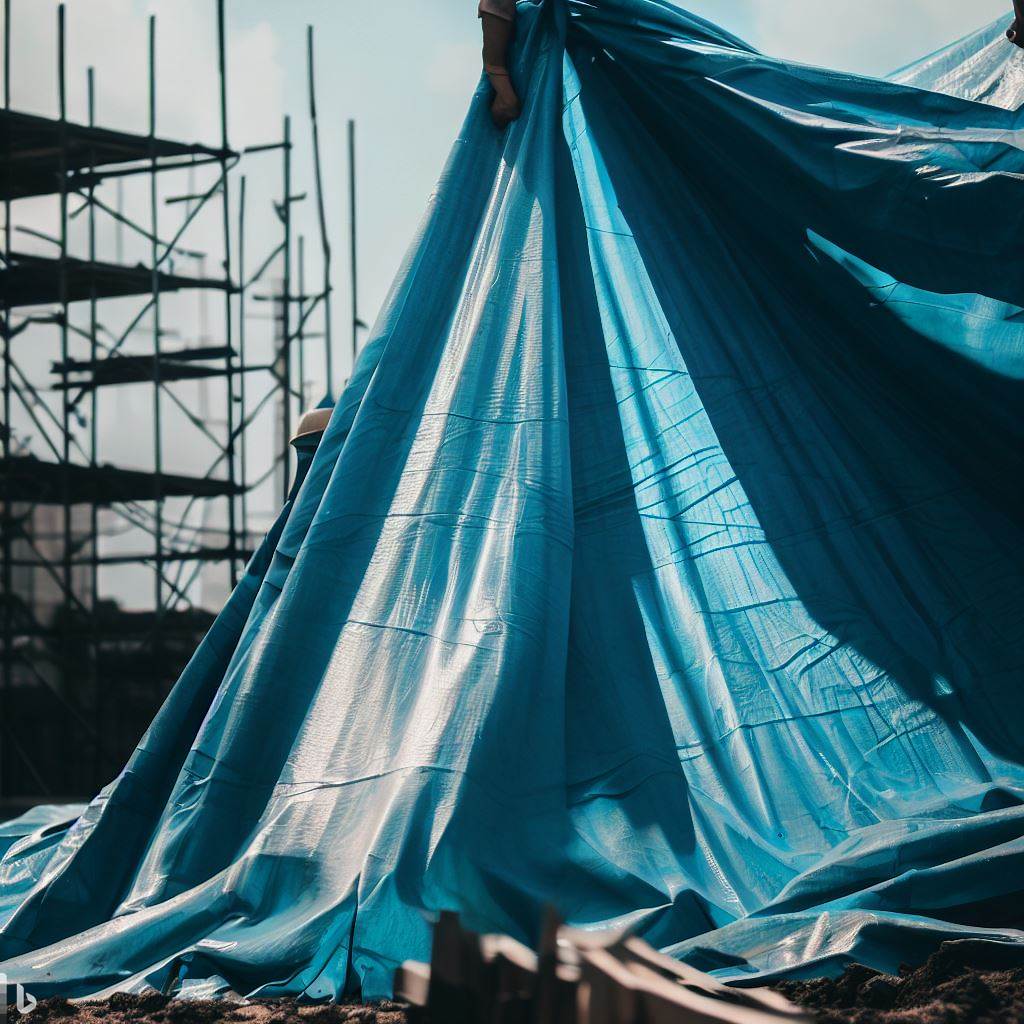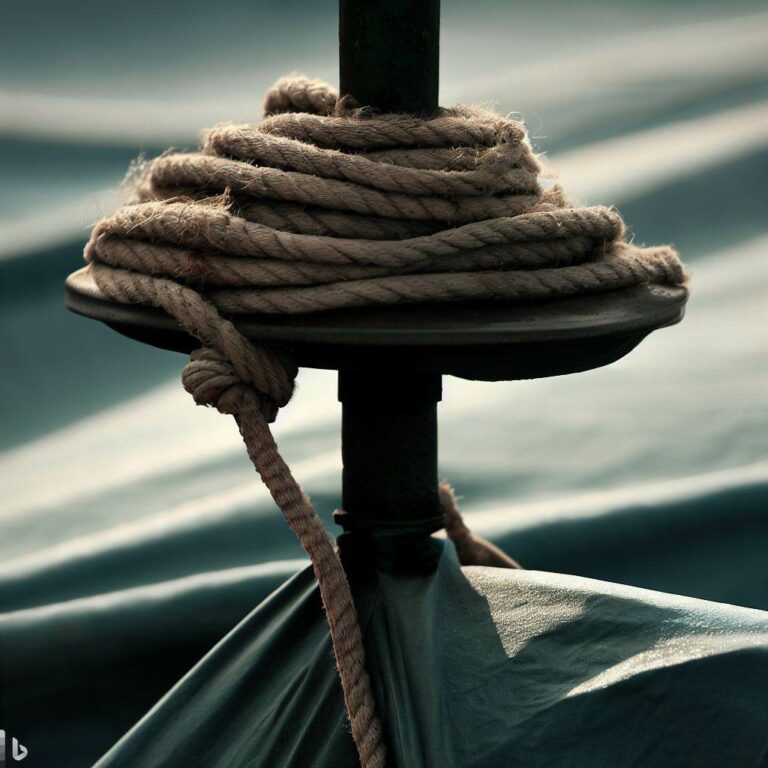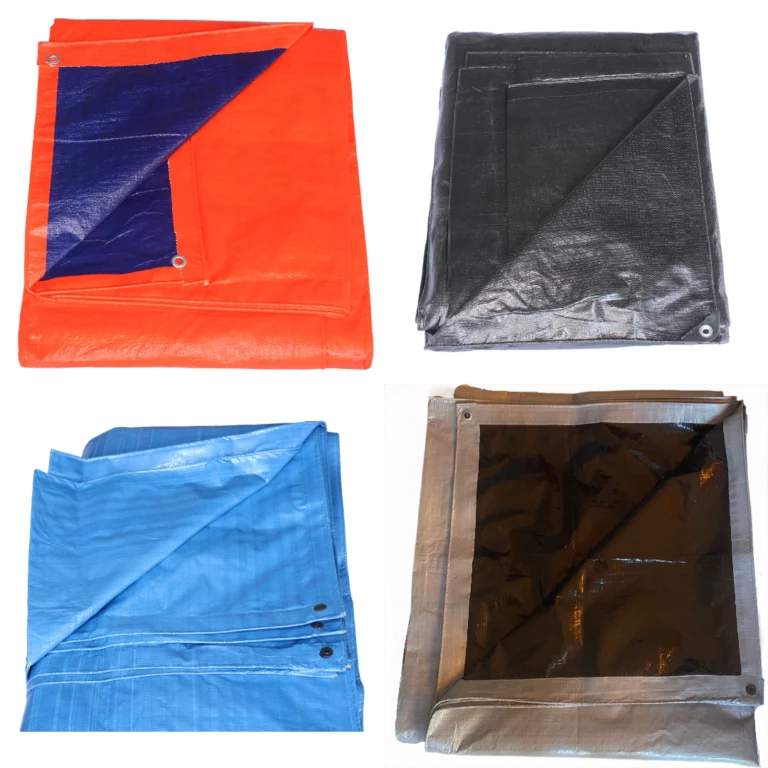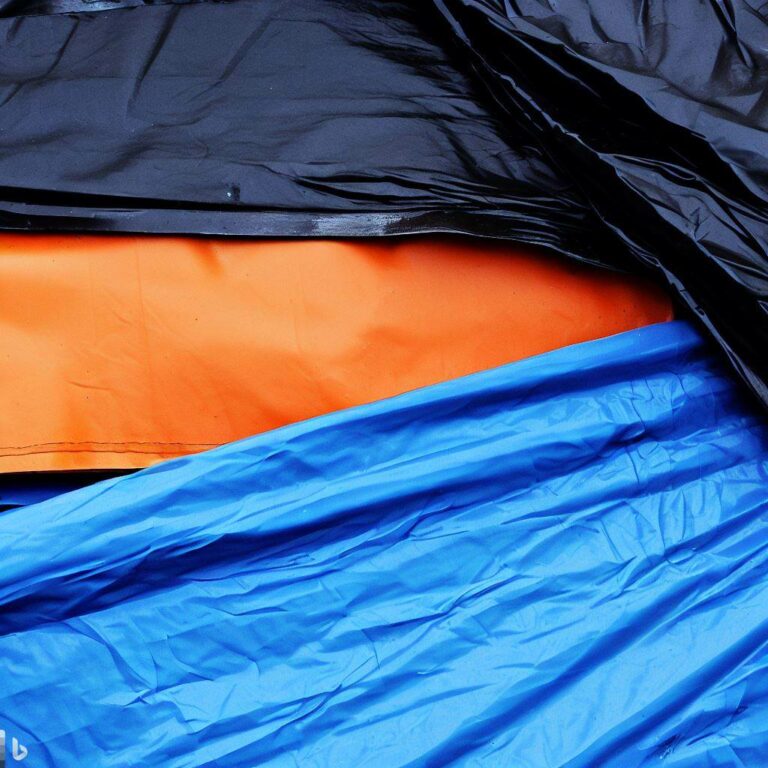9 Best Uses of Tarpaulin in Construction

Tarpaulin is a versatile and durable material that finds numerous applications in the construction industry.
Whether it’s protecting construction sites from weather elements, providing temporary shelter, or serving as a barrier against dust and debris, tarpaulin in construction has become an essential tool in modern practices.
The multiple applications and benefits of tarpaulin in the construction industry will be examined in this piece.
Related: What is Tripal/Tarpaulin? Beginner’s Guide to Tripal
Introduction
Tarpaulin, commonly referred to as a tarp or a poly tarp, is a sizable fabric sheet fabricated from impermeable or water-repellent materials like polyethylene or canvas.
It is commonly used in construction for its ability to protect from weather elements, create temporary shelter, and serve as a barrier against dust and debris.
Tarpaulins come in a plethora of sizes, colors, and thicknesses, offering exceptional customization options to cater to the distinct requirements of diverse construction projects.
Uses of Tarpaulin in Construction
Waterproofing
Waterproofing is a prominent application of tarpaulin in the construction realm. Tarpaulins, renowned for their excellent water resistance, provide effective shielding against rain, snow, and other forms of moisture, making them ideal for safeguarding construction sites.
They can be utilized to cover exposed surfaces like roofs, walls, and floors, thwarting water infiltration and mitigating the risk of damage to construction materials.
Protection from Weather Elements
Tarpaulins are also used to protect construction sites from other weather elements, such as wind, sunlight, and extreme temperatures.
Tarpaulins can be employed to establish makeshift enclosures around construction sites, offering protection against adverse weather conditions and ensuring a secure working environment for laborers.
Temporary Shelter
Tarpaulins in construction sites are often used to create temporary shelters.
Tarpaulins can serve as versatile building materials for constructing temporary tents, canopies, or awnings, offering a swift and cost-efficient solution to create provisional living or working spaces for construction personnel.
Scaffolding Cover
Tarpaulins in construction projects are commonly used as covers for scaffolding structures. They can be draped over scaffolding frames to protect workers from falling debris, provide shade, and prevent unauthorized access to the construction site.
Floor Protection
Tarpaulins can be used to protect floors during construction activities. They can be laid out on the floor to create a protective barrier against dirt, dust, and debris, preventing damage to the underlying surface and facilitating easy cleanup.
Dust and Debris Barrier
Tarpaulins can also be used as dust and debris barriers in construction sites. Tarpaulins can be strategically positioned in either vertical or horizontal orientations to establish partitions or enclosures, effectively halting the dispersion of dust and debris to other sections of the construction site and upholding a tidy working environment.
Concrete Curing
Tarpaulins can be used to cover freshly poured concrete to facilitate proper curing. By covering the concrete with a tarpaulin, evaporation of moisture is minimized, allowing the concrete to cure slowly and properly. This helps in achieving a stronger and more durable finished product.
Construction Site Enclosure
Tarpaulins can be used to create enclosures around construction sites.
Tarpaulins can be suspended along the periphery of the construction site, serving as a tangible barrier to deter unauthorized access and uphold safety and security measures.
Tarpaulin enclosures also help reduce noise pollution and dust spread from the construction site, maintaining a cleaner environment.
Greenhouse Cover
Tarpaulins are often used as covers for greenhouses in construction projects.
Tarpaulins can be utilized to establish a controlled environment conducive to plant growth, safeguarding the plants from inclement weather conditions and promoting their optimal development.
Tarpaulin covers for greenhouses are UV resistant and provide insulation, helping maintain optimal temperature and humidity levels inside the greenhouse.
Related: Best Uses of Tarpaulin: Learn when to use it
Advantages of Tarpaulin in Construction
Tarpaulins offer several advantages when used in construction projects. Some of the key advantages include:
Cost-effective
Tarpaulins are a cost-effective solution for various construction needs.
Tarpaulins are a cost-effective alternative for contractors and builders, as they are relatively inexpensive in comparison to other construction materials and methods, offering a budget-friendly solution.
Are you from Nepal? If Yes, Check our guide on the Top 3 Cost-Effective Tripal in Nepal
Versatile
In construction, tarpaulins exhibit remarkable versatility and find extensive utility in diverse applications. From waterproofing to temporary shelters to dust barriers, tarpaulins can be customized and used in different ways, making them adaptable to different construction requirements.
Durable
Tarpaulins are fabricated from resilient materials that exhibit exceptional durability, enabling them to withstand adverse weather conditions, abrasion, and the rigors of construction sites.
These purpose-built coverings are engineered for long-term use, delivering reliable protection and optimal performance throughout the entirety of the construction process.
Easy to Install
Tarpaulins are easy to install, saving time and effort on construction sites. They can be quickly draped, tied, or secured using ropes, bungee cords, or other fastening methods, making them a convenient option for temporary and portable solutions.
Customizable
Tarpaulins can be customized to suit specific construction needs. They are available in various sizes, colors, and thicknesses, allowing contractors to choose the right tarpaulin that fits their requirements.
Customization options include adding reinforced edges, grommets, or other features to enhance durability and functionality.
Portable
Tarpaulins are lightweight and portable, making them easy to transport and store on construction sites. They can be easily folded, rolled up, or packed, allowing for easy transportation and storage when not in use.
Environmentally Friendly
Tarpaulins are considered environmentally friendly as they are reusable and recyclable.
Tarpaulins are designed for multiple uses, minimizing the reliance on single-use materials and mitigating waste.
Moreover, tarpaulin in construction projects can be used very properly as they are crafted from eco-friendly materials such as canvas and is biodegradable, rendering them a sustainable choice.
UV Resistant
Tarpaulins made of high-quality materials are UV resistant, protecting against the harmful effects of sunlight. This makes them suitable for outdoor construction applications where prolonged exposure to sunlight is expected.
Flame Retardant
Certain tarpaulins are treated with flame-resistant chemicals, endowing them with formidable resistance against flames and sparks.
This supplementary safety feature proves invaluable in construction sites where the potential for fire hazards exists, further enhancing overall safety measures.
Conclusion
In conclusion, the use of tarpaulin in construction offers numerous benefits. From waterproofing to protection from weather elements, temporary shelter, floor protection, dust and debris barriers, and more, tarpaulins are versatile, cost-effective, and durable solutions for modern construction practices.
Tarpaulins are renowned for their ease of installation, customization options, portability, and eco-friendliness, rendering them a favored choice among contractors and builders alike.
The utilization of tarpaulins in construction projects contributes to streamlined construction processes, heightened safety measures, and the preservation of finished product quality.
Are you a tarpaulin wholesaler? Check our page on Tripal/Tarpaulin to learn more.
FAQs (Frequently Asked Questions)
How long do tarpaulins typically last in construction use?
The durability of tarpaulins depends on various factors such as material quality, usage conditions, and maintenance. However, high-quality tarpaulins can last for several years with proper care and storage.
Can tarpaulins be used in extreme weather conditions?
Yes, tarpaulins made of durable materials and treated for weather resistance can withstand extreme weather conditions, including heavy rain, snow, and sunlight.
Are tarpaulins environmentally friendly?
Tarpaulins made of materials like canvas are biodegradable and considered environmentally friendly as they are reusable and recyclable.
Can tarpaulins be used for temporary structures on construction sites?
Yes, tarpaulins are commonly used for creating temporary structures such as shelters, enclosures, and dust barriers in construction sites.
Are tarpaulins easy to install and remove?
Yes, tarpaulins are easy to install and remove, and they can be secured using ropes, bungee cords, or other fastening methods, making them a convenient option for temporary solutions in construction projects.
Can tarpaulins be used for waterproofing in construction?
Yes, tarpaulins are commonly used for waterproofing applications in construction, such as protecting concrete slabs, roofs, and equipment from water damage.



